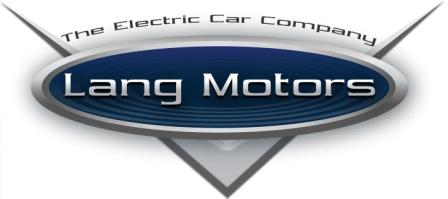
Disruptive Innovation offers the best way for companies to grow by creating new markets. The key issue is that for new entrants today in many markets, superior product or service just doesn’t matter. Disruption offers a framework for thinking about new growth. Many markets are saturated by non-differentiated competitors. Therefore to attract attention, companies should consider disruption as part of a strategic plan for new markets.
In many markets consumers and corporate buyers have latched onto their suppliers and their trusted relationships. As a result, they are unlikely to be dislodged from their buying habits unless disruptive alternatives are available. Disruption is best defined as an innovation that creates a new market or a new context for consumption, and perceived as inferior by existing customers in the mainstream.
Disruptive innovation is difficult to achieve and may not be suitable for established markets because it does not support current customers. In fact, disruption goes against of many business practices, especially the conventions of Total Quality Management and predictable marketing plans. It’s important to identify that disruptive innovation is not sold through mainstream channels nor targeted at mainstream customers. Established suppliers do not pursue business opportunities that threaten their business or that of their customers. For this reason, it is difficult for disruptive innovation to thrive within mainstream suppliers, unless a high degree of autonomy exists in terms of establishing a new business model and a new cost structure.
In some cases potentially disruptive technologies are co-opted by mainstream suppliers in ways that detract from the innovation. For example, General Motors’ EV1 electric car failed because it was sold by a mainstream car company and was judged by the market to be inferior to mainstream cars, despite 23 patents, a long driving range between charges and $1B of taxpayers money.
Disruptive innovation is not an easy process for established suppliers in mainstream markets. It is generally suited to new entrants trying to break into markets. The execution of disruptive business strategy challenges many of the norms of incumbent suppliers, including definitions on target markets and ideal business models. Feedback from existing customers on a potentially disruptive innovation may detract from the innovation.
Take the case of fully-electric vehicles (FEV). Drivers have consistently said FEV need to have longer range. Why? Because that is the benchmark established by Internal Combustion Engines (ICE). As a result, most failed FEV have been saddled by very heavy and expensive batteries, occupying valuable space in trunks and back seats. Yet, in the few markets where FEV are successful, convenience is more important than range.
Harvard Professor Clayton Christensen, the pioneer in disruptive innovation, argues that disruptive products like the FEV can’t be served by mainstream channels because they see only the product’s weaknesses relative to their current business. Case in point: ICE car dealers earn much of their profit from parts and service. But an FEV doesn’t need oil changes or tune-ups, so to an ICE dealer this will be a bad fit. Convincing mainstream ICE car dealers and ICE drivers to go fully electric will be a tough battle.
Clearly, a new FEV dealership targeting the niche market can’t deliver the near-term volume a big manufacturer needs. But if the FEV does hit the mainstream, Lang Motors Ltd. and its 9 Electric Avenues will grow with it.
In many markets consumers and corporate buyers have latched onto their suppliers and their trusted relationships. As a result, they are unlikely to be dislodged from their buying habits unless disruptive alternatives are available. Disruption is best defined as an innovation that creates a new market or a new context for consumption, and perceived as inferior by existing customers in the mainstream.
Disruptive innovation is difficult to achieve and may not be suitable for established markets because it does not support current customers. In fact, disruption goes against of many business practices, especially the conventions of Total Quality Management and predictable marketing plans. It’s important to identify that disruptive innovation is not sold through mainstream channels nor targeted at mainstream customers. Established suppliers do not pursue business opportunities that threaten their business or that of their customers. For this reason, it is difficult for disruptive innovation to thrive within mainstream suppliers, unless a high degree of autonomy exists in terms of establishing a new business model and a new cost structure.
In some cases potentially disruptive technologies are co-opted by mainstream suppliers in ways that detract from the innovation. For example, General Motors’ EV1 electric car failed because it was sold by a mainstream car company and was judged by the market to be inferior to mainstream cars, despite 23 patents, a long driving range between charges and $1B of taxpayers money.
Disruptive innovation is not an easy process for established suppliers in mainstream markets. It is generally suited to new entrants trying to break into markets. The execution of disruptive business strategy challenges many of the norms of incumbent suppliers, including definitions on target markets and ideal business models. Feedback from existing customers on a potentially disruptive innovation may detract from the innovation.
Take the case of fully-electric vehicles (FEV). Drivers have consistently said FEV need to have longer range. Why? Because that is the benchmark established by Internal Combustion Engines (ICE). As a result, most failed FEV have been saddled by very heavy and expensive batteries, occupying valuable space in trunks and back seats. Yet, in the few markets where FEV are successful, convenience is more important than range.
Harvard Professor Clayton Christensen, the pioneer in disruptive innovation, argues that disruptive products like the FEV can’t be served by mainstream channels because they see only the product’s weaknesses relative to their current business. Case in point: ICE car dealers earn much of their profit from parts and service. But an FEV doesn’t need oil changes or tune-ups, so to an ICE dealer this will be a bad fit. Convincing mainstream ICE car dealers and ICE drivers to go fully electric will be a tough battle.
Clearly, a new FEV dealership targeting the niche market can’t deliver the near-term volume a big manufacturer needs. But if the FEV does hit the mainstream, Lang Motors Ltd. and its 9 Electric Avenues will grow with it.






No comments:
Post a Comment